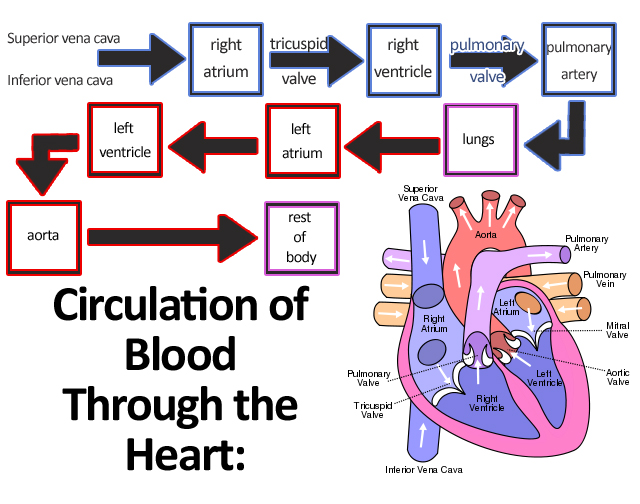Below is a collaboration of the research I've made including outside of class:
Respiratory System
- The respiratory system is the set of organs that allows a person to breathe and exchange oxygen and carbon dioxide throughout the body.
- Before blood can find its way into the bloodstream, oxygen has to get into the lungs; plus, the carbon dioxide has to find its way out. You accomplish these tasks by breathing air in and out via the respiratory system.
- This system is divided into two parts: the upper respiratory tract and the lower respiratory tract.
Parts of the upper respiratory tract:
- Nose/Mouth: The nose draws in air through the nostrils and into the nasal cavity. The mouth also draws in air, especially during times of physical exertion or when the nose is “stuffy.”
- Laryngopharynx: Air passes through the nasopharynx and oropharynx toward the laryngopharynx, which is the opening to the larynx (or voice box).
Parts of the lower respiratory tract:
- Trachea: The trachea (or windpipe) continues from the larynx.
- Bronchi: The trachea splits into two bronchi that each lead to a lung.
- Lungs: Each lung is divided into lobes. The right lung has three lobes and the left lung has two.
- Alveoli: The bronchi branch into smaller bronchioles that lead to the alveoli, which are small air sacs surrounded by capillaries (very small blood vessels). Gas exchange between the air and blood occurs across the alveolar and capillary walls.

 As air is breathed in through the lungs, it travels down the Trachea through the Larynx, into the lungs. It travels through the Bronchi into the Alveoli. The O2 molecules diffuses through the cell membrane of the capillaries seamlessly, which allows the oxygen to enter the bloodstream. The remaining elements inside the lungs is breathed out. Carbon dioxide is also released from the body where we break down glucose and oxygen into water and carbon dioxide. Water is released through sweat, while carbon dioxide diffuses through the cell membrane of the capillaries.
As air is breathed in through the lungs, it travels down the Trachea through the Larynx, into the lungs. It travels through the Bronchi into the Alveoli. The O2 molecules diffuses through the cell membrane of the capillaries seamlessly, which allows the oxygen to enter the bloodstream. The remaining elements inside the lungs is breathed out. Carbon dioxide is also released from the body where we break down glucose and oxygen into water and carbon dioxide. Water is released through sweat, while carbon dioxide diffuses through the cell membrane of the capillaries.Circulatory System
- The job of the circulatory system is to transport food and oxygen to the cells of the body and collect waste products of the body.
- The heart is the size of an adult's fist and beats, on average, 100,000 times per day. This would mean the heart pumps approximately 5 gallons of blood a day.
- If we joined all of our blood vessels together end to end it would reach a distance of over 60,000 miles; over two times the circumference of the earth.
- There are three types of blood vessels:
- Arteries: Carries de-oxygenated blood to the lungs.
- Veins: Carries oxygenated blood to the heart and then to the rest of the body.
- Capillaries: Allow water, oxygen, carbon dioxide, and other nutrient and waste substances to exchange between blood and surrounding tissues.
- Beats of the heart are regulated by the pacemaker which is located at the top of the right atrium.
- The cardiac muscle is exclusive to the heart and never gets fatigued. The heart is protected by the ribcage.
- Mitral valves make sure the blood flows through the heart only one way.
- Heart is separated (by the septum) into two sides to not allow the oxygenated blood and de-oxygenated blood to mix.
The process of blood circulation
- De-oxygenated blood returns to the heart after flowing through the body.
- The blood enters the right side of the heart through the right atrium, through the tricuspid valves, through the right ventricle and pumped out to the lungs by the pulmonary arteries.
- The lungs refresh the blood with a supply of oxygen which turns the blood red.
- The oxygenated blood enters the left side of the heart through the left atrium, through the mitral valves, through the left ventricle and pumped out to the rest of the body by the aorta.
- Systole is when the heart is contracted and is when the blood from the ventricles are pumped out of the heart. The right ventricle contracts a bit sooner than the left ventricle.
- Diastole is when the heart is relaxed and the blood from the atria are pumped to the ventricles.

No comments:
Post a Comment